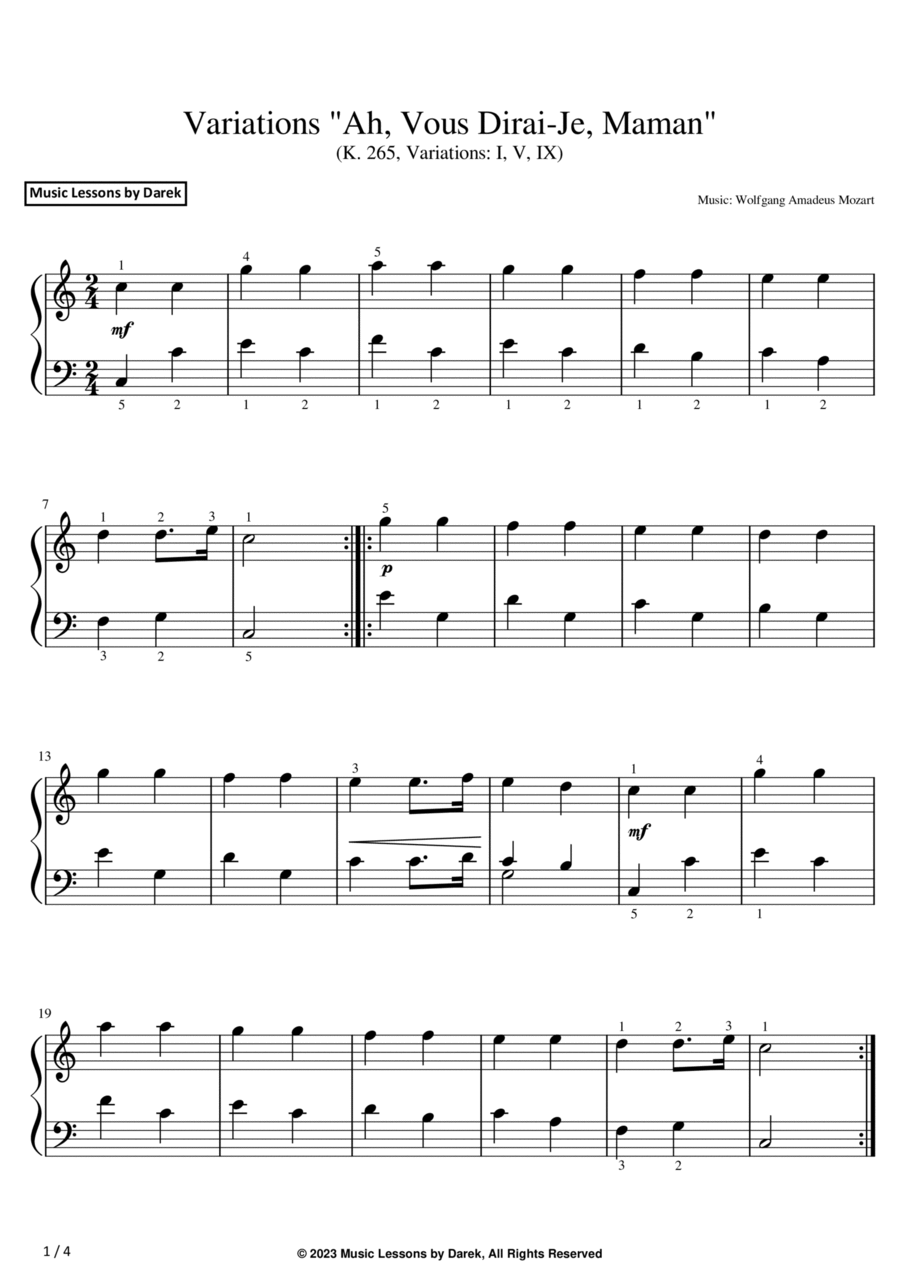Easy Piano - Level 2 - Digital Download SKU: A0.1272770 By Wolfgang Amadeus Mozart. By Wolfgang Amadeus Mozart. Arranged by Darek. Classical. Score. 4 pages. Darek #864966. Published by Darek (A0.1272770). Variations Ah, Vous Dirai-Je, Maman (EASY PIANO) (K. 265, Variations: I, V, IX) [Wolfgang Amadeus Mozart]Simplified arrangement for pianists of Variations Ah, Vous Dirai-Je, Maman (K. 265, Variations: I, V, IX) by Wolfgang Amadeus Mozart. Easy version for pianists | Easy piano arrangement | Beginner Version | Easy Piano Sheet Music For Beginners | Classical Period. Included: Fingering, Dynamics, Articulations and video YouTube tutorial. Unlock the wonders of classical music with my carefully selected collection of easy piano sheet music, thoughtfully tailored for beginner pianists. Immerse yourself in the delightful Variations Ah, Vous Dirai-Je, Maman (K. 265, Variations: I, V, IX) by Wolfgang Amadeus Mozart, a timeless gem from the classical era. Discover the joy of playing these charming variations, carefully arranged for ease and enjoyment. My sheet music includes fingering, articulation, and detailed dynamics markings, ensuring a seamless learning experience for aspiring pianists. To elevate your musical journey, I offer a valuable YouTube tutorial video, providing expert guidance and insights to refine your performance and capture the essence of Mozart's genius. Whether you're a novice seeking a fulfilling challenge or an enthusiast eager to expand your repertoire, this easy-level arrangement is perfect for all piano lovers. Embrace the magic of Mozart's Variations and transport yourself to the captivating era of classical music. Keywords: easy piano sheet music, beginner pianists, Variations Ah, Vous Dirai-Je, Maman, K. 265, Variations I, V, IX, Wolfgang Amadeus Mozart, classical era, fingering, articulation, dynamics, YouTube tutorial, piano, notes, music, musicians, song, charming, classical music, genius, harmonious, repertoire, melodies.
